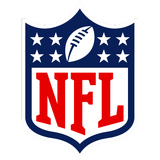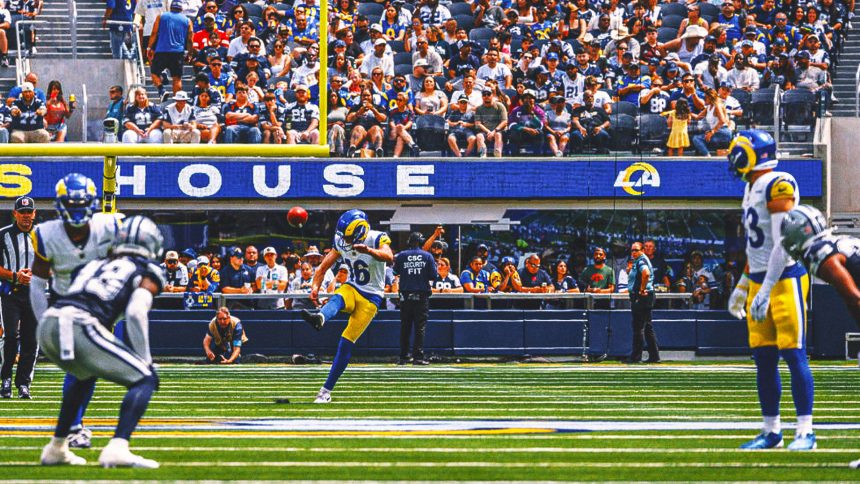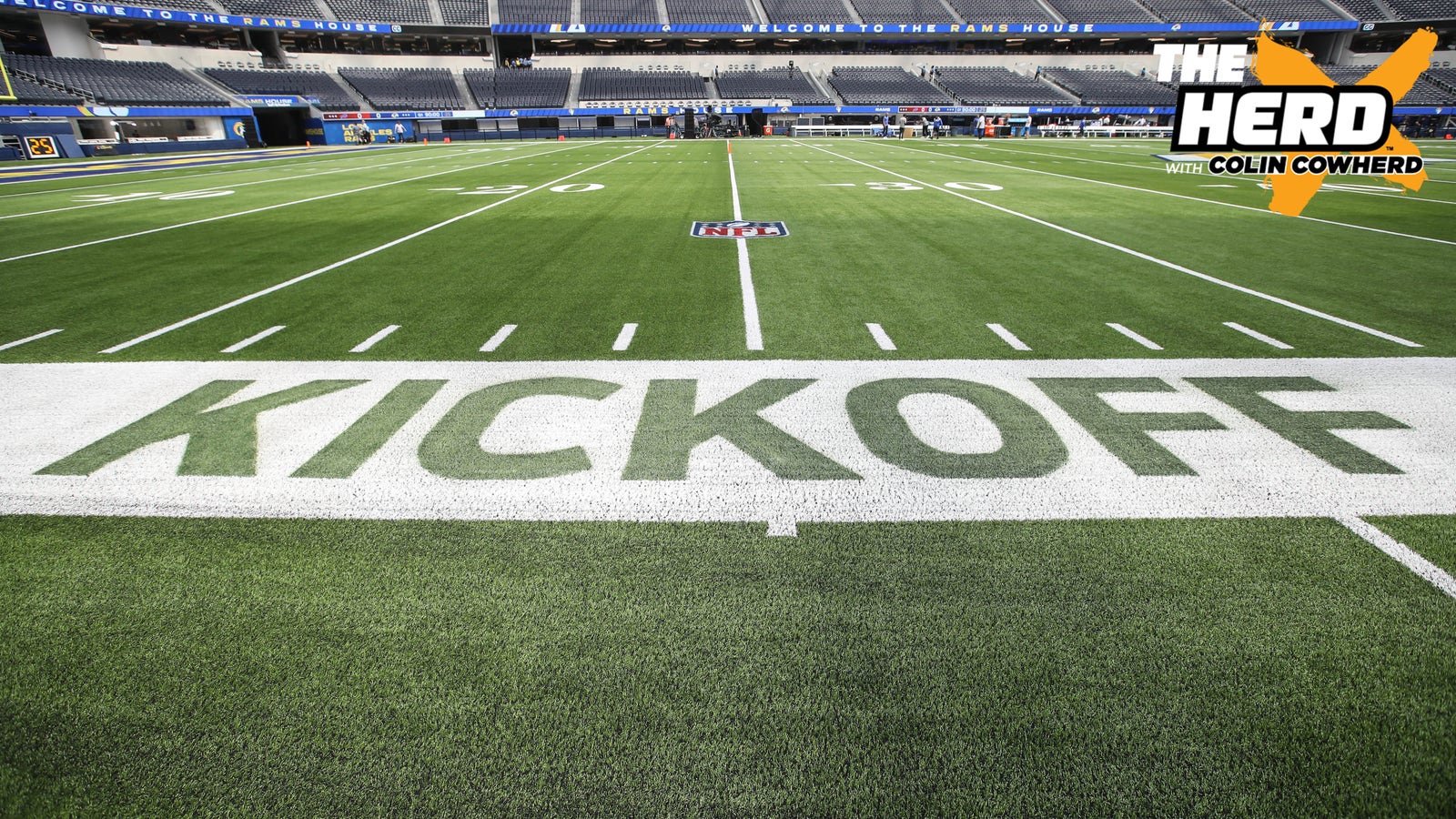What did we learn about the NFL‘s new kickoff return in the 2024 preseason?
This three-week crash course in the league’s new model is very much uncharted territory, but it gives us more than 400 kickoff returns and a decent sample size from which we can produce a clearer picture of how it might impact the upcoming season.
Coaches are still learning how to solve the challenges of having most players just five yards apart when the ball is fielded. During the preseason, they’ve been experimenting with how best to populate both the return and coverage units, and they might be hiding their best ideas for the regular season.
A refresher on where the ball is placed if it isn’t returned: There are now three different kinds of touchbacks. The most common one is when the ball is kicked into or through the end zone and the ball is placed at the 30 (previously it was the 25). If the ball goes out of bounds, or lands outside the “landing zone” between the 20 and the goal line (so like the 21-yard line and out), then that’s a major touchback, and it puts the ball at the 40. If the kickoff lands in the field of play and bounces into the end zone and is downed there, then the touchback only comes out to the 20.
ADVERTISEMENT
After the completion of the preseason on Sunday, here are 10 things we’ve learned about how this kickoff return is different and what might be ahead:
1. Many more returns overall
The impetus for making this change was that the NFL kickoff had become a hollow play, with 78% of them last year resulting in touchbacks and the ball being placed at the 25. It was a non-play, an excuse to use the restroom or grab something to eat.
Toward that end, the preseason showed the new model has successfully brought the kickoff return back. By our math, 70.2% of the kickoffs were returned. That’s a remarkable difference from 22% being returned – the new rules have more than tripled how often a kickoff is an actual play, and that was the priority.
2. Better field position compared to last season
In the 2023 regular season, the average starting field position after a kickoff was basically the 26-yard line, so all the work of attempting a return was netting only a single yard better than conceding the touchback. Under the new model, a ball that lands in the end zone and is downed puts the ball at the 30, but the average return has also improved: In 49 preseason games, the new average starting field position after a kickoff was basically the 29 — 28.7 to be precise, more than three yards better than in 2023.
In theory, starting drives in better field position means fewer offensive yards overall. The field is three yards shorter for 4.2 drives per game after kickoffs, though a drive starting inside the 30 after a kickoff was twice as likely to yield a punt as a touchdown last year.
3. No touchdowns yet
In 420 kickoffs in this preseason, no player was able to break through for a touchdown return. The closest anyone got was the 49ers‘ Isaac Guerendo, who had a 93-yard return against the Raiders but stepped out at the 4. That in itself shouldn’t be surprising, as the kickoff return TD has nearly vanished from preseason football, with just one — by the Cowboys‘ Kavontae Turpin in 2022 — in the previous five preseasons.
But go back a bit, and there were at least two kickoff return touchdowns every preseason from 2010-17, including six in 2013 and five in 2016. As the league incentivized touchbacks with safety in mind, teams were more and more willing to concede a start at the 25, especially at a time of year when the absolute priority is avoiding injury wherever possible.
4. More longer kickoff returns now
Guerendo’s run was one of five kickoff returns of 50-plus yards in this preseason. That might not seem like a lot, but there were only three such returns in the 2023 preseason, a nice apples-to-apples comparison between the old model and the new model that shows a significant increase in longer returns.
If you look at returns of 40-plus yards, the total number doubled from nine last year to 18 this preseason; if you try returns of 35-plus yards, it nearly doubled, from 15 last year to 28 this time. Even just returns of 30-plus yards — basically a win compared to the new regular touchback — those went up from 31 in 2023 to 51 this preseason. So not only are more kickoffs being returned, they’re almost twice as likely to be returned for long yardage.
5. Penalties are still a killer
The new kickoff rules require that everyone but the coverage players and blockers (everyone but the kicker and returners) must not move until the ball has been caught, and there are specific rules about how many players must be on each side of the kicker and other new wrinkles. For all those changes, there were penalties on only 43 kickoffs — about one in 10 of the total number.
Of these, 90% of the penalties were on the returning team. Holding is still a major problem, especially with less-experienced players handling special teams in exhibition games. We mentioned the average starting field position off a kickoff is the 29, but on a kickoff that has a penalty, the average starting position is the 15-yard line, and three started at the 10 or worse.
6. Bringing the ball out of the end zone rarely works
This might be a skewed sample because in the preseason, with no real consequence, it’s more important to get reps on actual plays than it is to practice taking a knee. The new return model, offering five more yards on a touchback fielded in the end zone, presents a new calculation for returners to make on whether they should bring the ball out of the end zone rather than conceding the 30.
The answer? Even if you’re confident in your return abilities, it’s rarely the right call. There were 46 kickoffs where the returner brought the ball out of the end zone (some as deep as eight yards into the end zone) and of those 46, only six got the ball out past the 30-yard line, and none farther than the 39. The average starting field position on a kickoff brought out of the end zone is just the 24 — the 23.6 to be precise — so it’s about five yards worse than an average kickoff, with little upside to justify the risk in preseason.
7. About those major touchbacks
As mentioned above, the costliest penalty in the new model is the “major touchback,” which puts the ball at the 40 when the kickoff lands out of bounds, or hits the ground outside the 20-yard line (or the “landing zone” in official jargon). NFL teams avoided these fairly well, with only 13 such penalties — about 4% of total kickoffs.
The threat of such a penalty makes it tougher to attempt a short kick that can bounce before the returner gets to it, or attempt a line-drive kick that could carom off an opposing blocker for a loose ball. The 13 plays were split up evenly — four in each of the first two full preseason weekends, five this past weekend. Ten of the 13 were short, and three others landed out of bounds.
Curiously, only one kicker had more than one such violation — the Lions‘ Jake Bates had three, with two short kicks and one that landed out of bounds. Does testing the limits of where you can place the ball point to more aggressive, unconventional kicking strategies in the regular season? We shall see.
[RELATED: Jets QB Adrian Martinez headlines UFL players who could make NFL rosters]
8. Perhaps a handshake agreement
If NFL teams have joint practices, it also stands to reason they might have had discussions about how they want kickoffs handled in an exhibition game. Both teams in theory might have agreed they wouldn’t bring kickoffs out of the end zone if they’re especially concerned about limiting injuries, or conversely, they might have wanted all kicks returned if they value getting every rep for returners and coverage units.
That would make it easier to explain such a wide range of touchback percentages in this weekend’s games. The Rams and Texans, for instance, had eight kickoffs in their game, all touchbacks; the Jets and Giants had just one return in six kickoffs; and the Cardinals and Broncos had just two returns in 10 kicks. In the same weekend, the Colts and Bengals had returns on all nine of their kickoffs, and the Bears and Chiefs had returns on 10 of their 11, the lone exception a penalty for a short kick.
Along the same lines, the return rates changed considerably from week to week. By our count, the return rate went from 79.4% on the opening weekend to 75% the second week to just 58% this past weekend. Teams might be conceding touchbacks for simplicity’s sake in preseason and not necessarily changing their strategic perspective for real-time situations.
9. Cool outlier outcomes
There were no touchdowns on kickoff returns, but there were weird plays. In the first weekend, the Chiefs‘ Mecole Hardman got a safety — the ball came to rest at the 2-yard line, and he carefully moved himself into the end zone and reached out for what he hoped would be a touchback, but instead it put two points on the scoreboard. Safeties, by the way, now produce a kickoff from the 20-yard line (it used to be a free kick) and the league had two of those — neither yielding particularly good field position.
Those minor touchbacks — the ones where the ball lands on the field and bounces into the end zone, so it only goes to the 20 — are the rarest of the touchbacks. There were just four out of 420 kickoffs, less than 1%, which suggests the league has put a priority on fielding the kickoff in the air and not letting the ball hit the ground. Detroit’s Bates, who had the three major touchbacks, also had a minor one as well, checking off every box in the new kickoff bingo card.
There were only two turnovers on kickoff returns — the Lions lost one to the Chiefs in the first weekend, and the Giants lost one to the Jets. Teams were looking for sure-handed returners more than ever — just seven returns were muffed, with five in the opening weekend and one in each of the last two, all seven recovered by the returning team.
10. Will teams commit to key players on kickoff units?
What we haven’t seen and don’t know is how much NFL teams will invest in kickoff and kickoff return units. In preseason, anyone important is held out of games entirely, let alone special-teams snaps, but that could change in the regular season. The old kickoff model had gunners running 40-plus yards downfield with each kick, so teams might be hesitant to use a starting defensive back who would then immediately take the field — a bit winded, perhaps — on defense.
Coaches have talked about approaching the new kickoff return like a running play in terms of blocking and scheme, but there wasn’t a preponderance of running backs used on returns, with a good split of backs and receivers, along with the occasional cornerback. Would a team put its No. 3 receiver or No. 2 running back deep to add an element of speed and big-play potential while taking on an added risk of collision and injury? Would a team put an every-down starting linebacker — someone already not coming off the field on defense — and use him on kick coverage to add a reliable tackler to limit the danger of a long return?
We’ll find out next week when the regular season kicks off — and the real kickoffs begin.
Greg Auman is FOX Sports’ NFC South reporter, covering the Buccaneers, Falcons, Panthers and Saints. He is in his 10th season covering the Bucs and the NFL full-time, having spent time at the Tampa Bay Times and The Athletic. You can follow him on Twitter at @gregauman.
[Want great stories delivered right to your inbox? Create or log in to your FOX Sports account, follow leagues, teams and players to receive a personalized newsletter daily.]
recommended

Get more from National Football League Follow your favorites to get information about games, news and more














